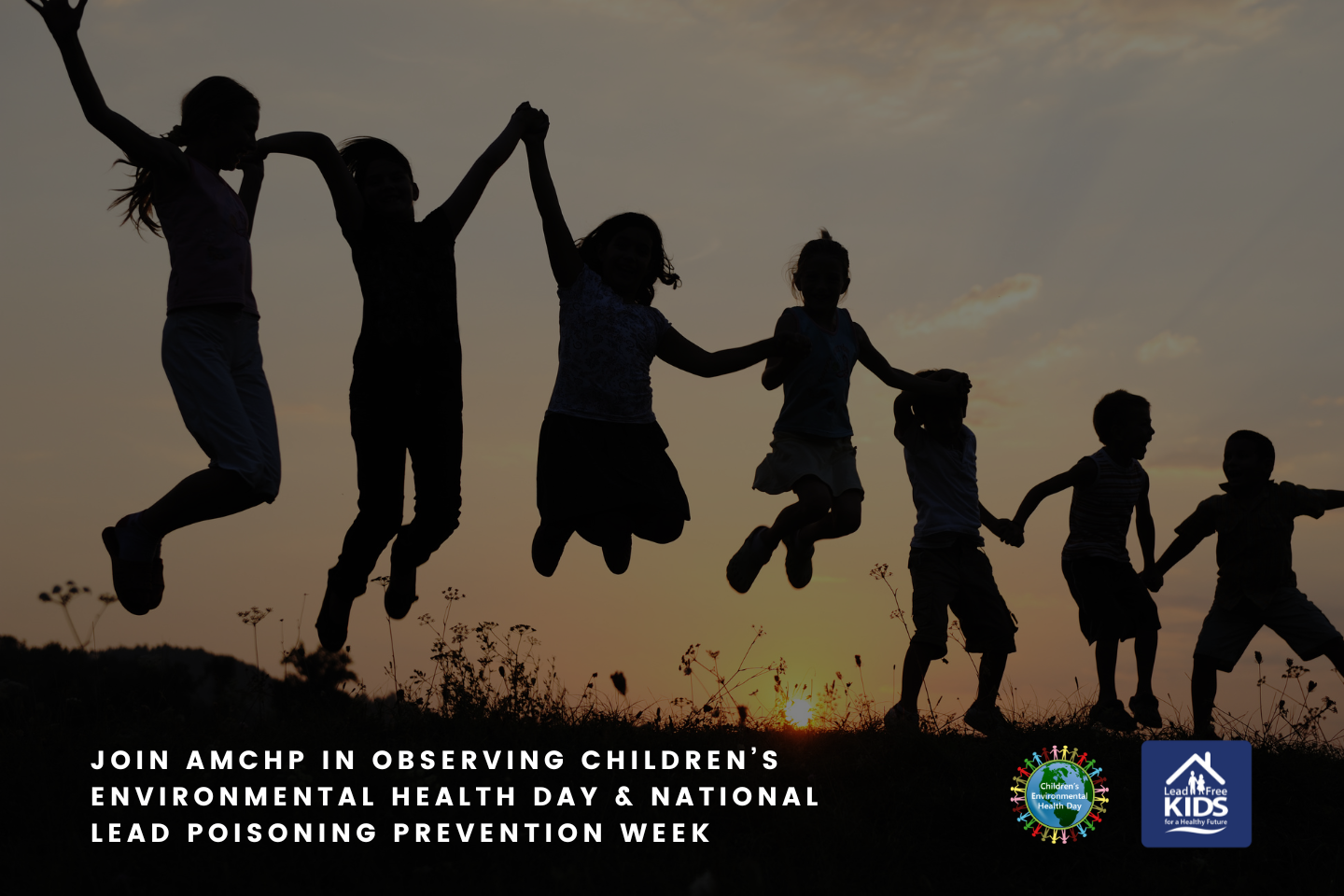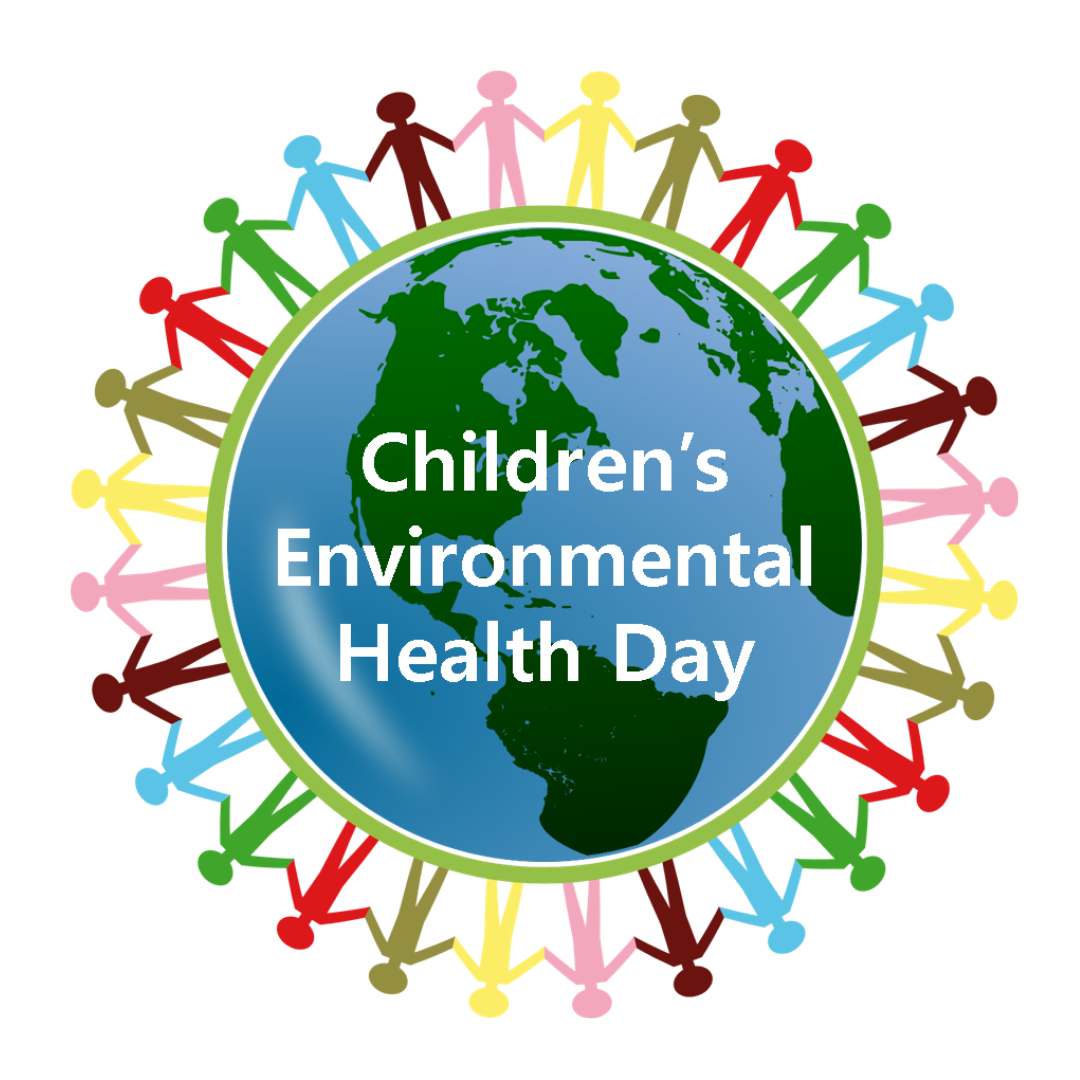
Children are more likely to experience environmental exposures than adults because of biological and behavioral factors. For example:
- Children’s brains and bodies are still developing and thus more vulnerable to toxins.
- Children proportionately eat, drink, and breathe more than adults, which increases their exposure to potentially harmful substances.
- Common childhood behaviors such as crawling and frequently putting their hands or toys in their mouths also increase their risk of exposure.
These environmental exposures before and after birth can have serious physical and/or developmental consequences that can affect children throughout their life course.
State and jurisdictional agencies, including Title V programs, understand how essential it is for children to have access to clean air and water and healthy living and learning spaces to thrive and reach optimal health. Thus, many of them have prioritized addressing harmful environmental exposures.
Children’s Environmental Health Day and National Lead Poisoning Prevention Week
Two environmental health-related observances happen every October – Children’s Environmental Health Day (October 12, 2023) and National Lead Poisoning Prevention Week (October 22 – 28, 2023).
Children’s Environmental Health Day (CEH Day) takes place on the second Thursday of October each year and is focused on action and equity. CEH Day is organized by the Children’s Environmental Health Network, which believes that all children have the right to healthy environments to thrive. Environmental health for all kids means clean air, clean water, and products free from harmful chemicals. The goal of #CEHDay is to collectively increase the visibility of children’s environmental health issues while empowering individuals and organizations to take action on behalf of children nationwide.
National Lead Poisoning Prevention Week (NLPPW) is a collaborative effort between the Centers for Disease Control and Prevention (CDC), the U.S. Environmental Protection Agency (EPA), and the U.S. Department of Housing and Urban Development (HUD). NLPPW strives to raise awareness of lead poisoning prevention and encourage preventive actions that reduce the likelihood of childhood lead exposure.
CEH Day Information and Resources
- Children’s Environmental Health Network resources.
- CEH Day Promotional toolkit.
- CEH Day Proclamation Request toolkit.
- Western States Pediatric Environmental Health Specialty Unit – Pediatric Environmental Health: e-Toolkit for Prevention (PEHT).
NLPPW Information and Resources
- NLPPW Information Kit in English and en español.
- NLPPW Sample Social Media Package in English and en español.
- CDC NLPPW website.
- EPA NLPPW website.
- HUD NLPPW website.
Statement of AMCHP CEO Terrance E. Moore on Children’s Environmental Health Day and National Lead Poisoning Prevention Week
October 5, 2023
“This October, AMCHP will again take part in the observance of Children’s Environmental Health Day (Oct. 12) and National Lead Poisoning Prevention Week (Oct. 22- 28). These two commemorations serve as a reminder of the vital connection between our environment and children’s health, emphasizing our commitment to ensuring a safe and healthy environment for children, families, and our communities.
As an organization committed to improving the lives of families and children, we recognize the critical role we play in advocating for and taking action to safeguard the well-being of the next generation. Along with our partners, we strive to work to ensure a healthier, safer, and more equitable future for all children. We also acknowledge that even with our efforts, environmental issues, like the wildfire devastation in Maui, can disproportionately affect communities, particularly children and those who are already marginalized. We are committed to not only advocating for children’s health but also serving as champions of equity and justice to ensure that every child has the opportunity to live and thrive in healthy environments.
In a concerted effort to enhance accessibility to systems and services tailored to the needs of pregnant people, infants, children, and families that are exposed to lead, AMCHP spearheaded the Maternal & Child Environmental Health Collaborative Improvement and Innovation Network (MCEH CoIIN) from 2017 – 2020. The MCEH CoIIN serves as just one illustration of the influence of collaborative partnerships in effecting systemic transformation to reduce and eliminate environmental health inequities.
The fabric of our mission lies in embedding our commitment to nurturing healthier environments for children into our daily work and initiatives. Together, we embark on proactive courses of action, as we continue to position the welfare of children as the focal point in the shaping of environmental health policies and the execution of purpose-driven programs.”
AMCHP’s Work Related to Environmental Health
Childhood exposure to lead contributes to developmental and intellectual disabilities, higher rates of neurobehavioral disorders such as hyperactivity and attention deficits, and lower birth weight in children. Reducing lead exposure in maternal and child health populations requires a comprehensive and coordinated approach.
From 2017-2020, AMCHP led a Maternal and Child Environmental Health Collaborative Improvement and Innovation Network (MCEH CoIIN) to address lead poisoning prevention. We encourage you to explore the MCEH CoIIN and the approaches used by nine different state teams in this MCH Lead Toolkit. You can also find more information about the MCH Lead Toolkit on our current initiatives page.
AMCHP also has resources focused on lifting essential information for our Title V members and partners in the areas of climate justice and resources on critical partnerships and environmental levers in early childhood nutrition and food justice.
AMCHP Information & Resources
- Online interactive resource – MCH Lead Toolkit
- Podcast Episode – The Kids Are Not Okay: Climate Change, Environmental Injustice, and What MCH & Youth Advocates Can Do
- Pulse Article – Taking Action to Address Environmental Health Today to Protect the Health of Future Generations
- Pulse Article – Inequities in Housing and Lead Exposure – Breaking the Link
- Pulse Article – Lead-ing New Partnerships in Child and Adolescent Health
- Pulse Article – Protecting Children From Lead Once And For All
- Article and Family Story, featured by NICHQ – Lead Poisoning Continues to Put Too Many Children at Risk
- MCH Essentials Series – Climate Justice
- Early Childhood Nutrition Module – Changing the Environment: Increasing Access to Nutritious Foods


